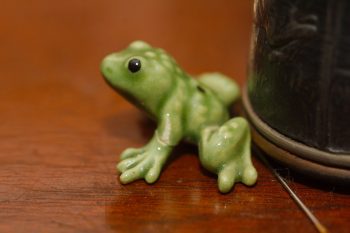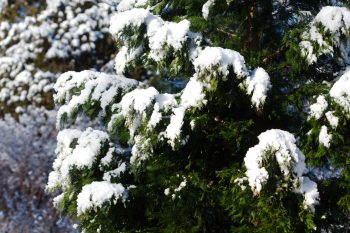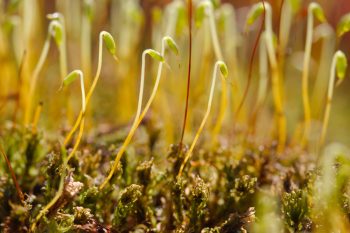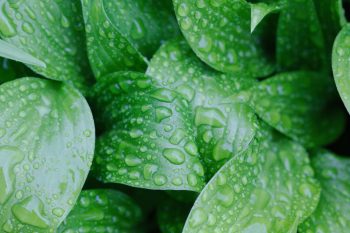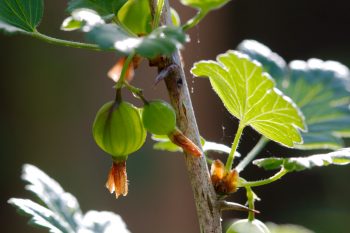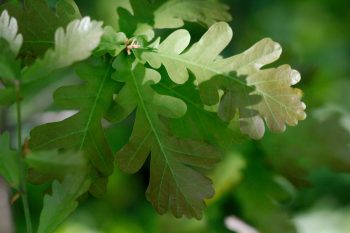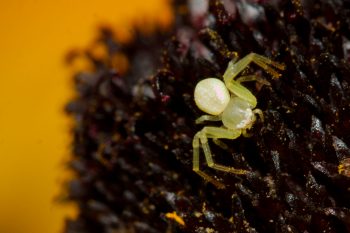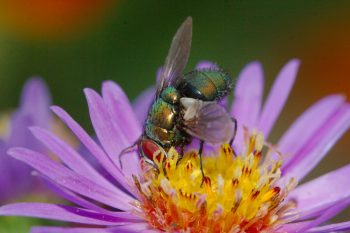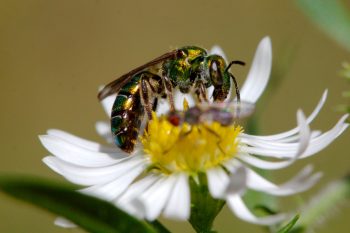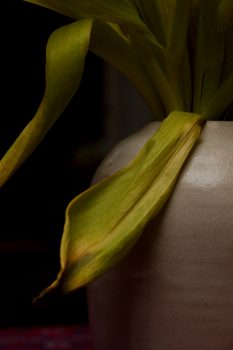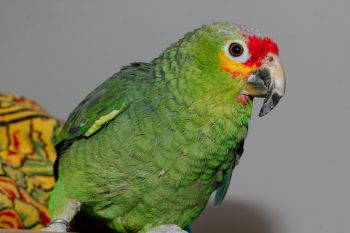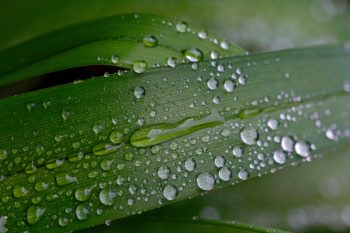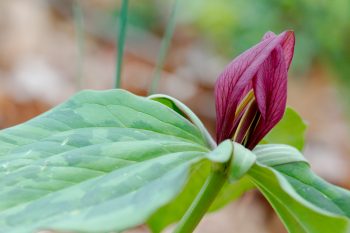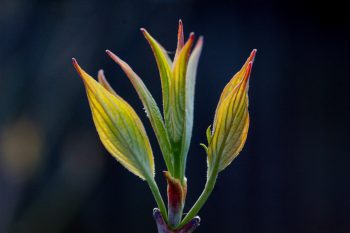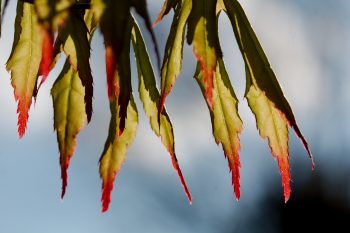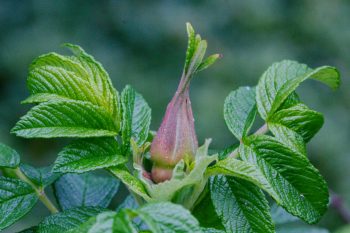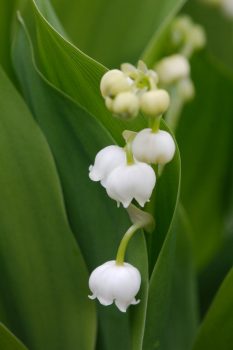This little green, caramic frog is sitting on our piano. I’m not sure exactly where it came from. Cathy probably knows but I haven’t bothered to ask. It probably showed up in a box at her mom’s house sometime in the last nine months. I don’t remember when it appeared on the piano, but there it is. As you may be able to see, it’s front left leg has been broken. It doesn’t affect the frogs ability to hop, though. That’s mostly because ceramic frogs don’t move very much, I suppose.
Tagged With: Green
Green Ceramic Frog
Calocedrus decurrens (Incense Cedar)
I’m a little late posting this but after yesterday’s snow squall, we had a nice cover of maybe as much as two inches of snow this morning. It was quite cool, down around 10°F (-12°C) and I put some salt down but being that cold, it’s not going to melt very much. I took some pictures in the yard before Cathy and I left for work. The sun was bright and was shining through the branches of trees that had some ice on them, which was lovely but hard to record very well. I decided to post this photo of snow on the branches of an Incense Cedar (Calocedrus decurrens) that is in the back of our yard. I planted four of them in the fall of 2007 and three survived. This is the tallest of them and is about 15 feet tall, I’d say. It’s starting to look like a real tree. The other two are doing fine but are not as tall, being about 12 and 7 feet tall respectively.
Solomon
Solomon is our pet red-lored amazon parrot (Amazona autumnalis) and he just turned 33 years old last month. We don’t know specifically when he was hatched but he was about nine months old when we got him in October, 1986, so we figure January of that year is close enough. Since it’s now February, we know that’s past. He’s a pretty thing but fairly timid and is not really what you’d call a talker. He says a few things that you can almost understand but that’s about it. He also doesn’t chew on toys or anything else we put in his cage, so we don’t bother any more. He obviously eats but he’s not interested in chewing other things. He needs his beak and nails trimmed but otherwise, he’s in pretty good shape. You can see in this photo that he has new feathers coming in, which is always a good sign.
Moss
It was a beautiful day today and I needed to get out of my office for a few minutes to clear my head. I’ve been working on two specific problems with one of the systems I’m working on. I’m pretty sure I managed to get one of them solved and settled. The other is proving to be a little trickier but I’ve managed to get it pretty close to working. Sometimes it’s useful to step away for a little bit and think about something else. Then when you come back, you can see it with somewhat fresher eyes. I find that I often come up with new ideas at that point. This is true in other realms than programming. When I’m working on a crossword puzzle and get about as much done as I can manage, putting it down and walking away and then picking it up later is generally all I need to find some new answers. Today’s foray out into the woods let me to a bunch of moss, and that’s what today’s photo features.
Rain on Hosta
It rained today and there was water on the the plants in the yard. The forecast was for a chance of rain all through the weekend but (as I write this on Monday) it turned out to be fairly nice. I really love the pattern of water on plant leaves, in any case, and these fresh, young leaves of hosta in a pot on our patio are such a beautiful, vivid green I couldn’t resist them. I also took pictures of water on Columbine flowers and leave and on a really pretty bracket fungus that was growing on the decaying roots of an oak tree that the county removed a few years ago.
Gooseberry
This gooseberry plant (Ribes uva-crispa) was originally put in by Albert in their yard. After he passed away, Brady said I could have it and it’s growing in the back of our garden. It blooms fairly early for a fruit bush and the fruit ripens fairly quickly. I really enjoy gooseberry jam, as I like most things of a tart nature. One thing to watch for when pruning and picking the fruit from a gooseberry bush is the thorns. They are quite sharp and vicious. There used to be a federal ban on growing gooseberry and other Ribes species but that was lifted in 1966. A few states still prohibit the growth of some or all Ribes species but they are all legally grown in Maryland.
Quercus robur ‘Fastigiata’
In 2013 I bought some fastigiate oaks from Musser Forests (http://www.musserforests.com/). Fastigiate is from Latin and means narrowing toward the top and when applied to trees, having upright usually clustered branches. Trees that have a more narrow form are often called fastigiate and these oaks are actually named Quercus robur ‘Fastigiata’. The English oak is a pretty tree, especially when it gets large, but it can be a bit much for a suburban garden, needing a huge space to be grown to full advantage. These narrow trees, however, should do reasonably well here. They are not quite as hardy as the species but I’ve seen them growing in the district and there is a huge one only a few blocks away, so I’m hopeful. I have them growing in two parts of the yard, one on the north end of the yard and one along the back (west side). Planted in 2013, they are already more than 10 feet tall, and growing quite quickly.
Adiantum pedatum (Northern Maidenhair Fern)
I’ve posted pictures of this fern before and I’ll probably do so again. It’s a pretty fern and worth growing, if you have any interest in ferns. I actually have it in a less than ideal spot that gets pretty much full sun from about noon onwards. It would be happier in full shade. The Missouri Botanical Garden page on this plant says, “High summer heat may cause fronds to brown by mid to late summer, particularly if good soil moisture is not maintained and/or plants are grown in too much sun.” Yep, that happens here. I really need to move it, or at least take a piece or two of it to grow in a better location. It does amazingly well in the sun, but it could be so much happier.
Tiny Crab Spider
I came across this spider on the head of a black-eyed Susan this evening. It was pretty hard to photograph, being really small (a couple millimeters long at most, and the wind was moving the flower slightly. It was also late enough in the day that the light was starting to fade. This particular shot is reasonably sharp. This is the sort of spider that you could easily walk past and not see, it’s so small. There’s no way it could bite you if it wanted to, because it simply wouldn’t have the strength to break your skin. I find it amazing that spiders as little as this can survive but there are lots of very small insects, as well, for them to live on.
Blow Fly
I took pictures of insects on aster flowers this evening. There was a bumble bee covered with little white dots that I’m pretty sure were eggs of some kind and didn’t bode well for the little critter. There was also a beautiful, metallic green, sweat bee (family Halictidae) and I got a picture of it as it lifted off the flower, which would have been amazing if it had been in better focus. The light was relatively low and I was using a flash with a white reflector for these pictures, which helped considerably. I also had a 25mm extension tube behind my 100mm macro lens, which helped me get that much closer.
Sweat Bee
I met Cathy outside for a little while early this afternoon. As we were walking back towards the entrance to my building we saw a white-tailed deer (Odocoileus virginianus) near the parking lot and I was able to get a few nice photographs of her. Cathy went back to her office and I went down near the pond and took some photos of insects. There was a type of fly that I hadn’t seen before. I thought it was a thick-headed fly (Family Conopidae) but it was identified as a Dioprosopa clavata, a syrphid fly (Family Halictidae) that resembles a thick-headed fly. Today’s photo, however, is of this metalic green sweat bee, a female in the genus Augochlorella.
Winter’s First Snow
We had our first snow of the winter overnight. It wasn’t anything that was going to snarl traffic, melting on roadways and not amounting to more than a thin covering on the grass, but it was snow. Early morning after a snow is often quite pretty, especially if the clouds that brought the snow have cleared and it’s sunny. That was the case today. I took a few pictures in the front yard, including this one of the holly near our driveway. The robins generally come at some point in the winter and devour all the berries from this tree. They congregated in another holly a couple days ago and have pretty much stripped that one.
Still Life with Tulip Leaf
Last week Dorothy bought some white tulips and had them in a vase in her room. Before going away for the long weekend she moved them down to the dining room table, so we got to enjoy them while she was gone. They are well past their prime now but I took pictures of them in their wilted state this evening. In this particular vase and with the diffuse lighting I used, this reminds me of a still life painting and I’m pretty pleased with how it turned out. I have a photograph from 2010 of roses in a vase that also reminds me of a still life and that one may be one of the best photos I’ve ever taken, certainly in the top 100 (not that I’ve ever actually graded them like that). This one isn’t quite up to that standard but I’m still pretty happy with it. I really wish I could paint. Not that I’ve ever really tried, but it’s a lot of work and without a lot of practice, it’s just not going to happen. There are a couple folks I knew in my high school days who are professional artists and I love seeing their work.
Solomon at 34
We don’t actually know his precise birth (or hatch) date, but when we got him in October, 1986, we were told he was nine months old. So, we assume his birth date is January, 1986. That makes him 34 this month. Parrots live a good, long while and he wouldn’t be considered an old bird yet. Perhaps middle aged. He seems to be healthy enough. His beak and nails need trimming and he really doesn’t get as much exercise as would probably be good for him. Nevertheless, we’ve managed to keep him around for more than 33 years, so we must be doing something right. Solomon, despite the wisdom implied by his name, is not much of a sage. He says a few things and those a bit poorly. He can make a pretty good racket, when he wants to, however.
Water Droplets
We had another rainy day today, to end March. It’s been so warm and sunny lately that it was a bit of a shock to stay indoors all day. I did get outside long enough to take a handful of pictures, but really not much more than that. These are daylily (Hemerocallis) leaves with rain on them, and the rain continued to fall while I was taking it. I probably should have spent the time to get a tripod and really focus carefully, but I just needed to get a picture. Maybe next time. Sorry.
Trillium
The third and final photo I’ll post from our visit to the Montgomery County Agricultural History Farm Park today. This is trillium and someone more in the know than I am could probably tell you which one. I’ll guess Trillium cuneatum, “the largest and most vigorous of the sessile trilliums that are native to the eastern U. S.” but I stress, that’s just a guess without much research behind it. Whichever it is, it’s a pretty little plant that should be in any woodland garden in our region. They don’t transplant well but it seems to me they would be worth the effort.
Dogwood Leaves
The afternoon sun was lighting up the newly opened leaf buds on a small flowering dogwood (Cornus florida) in our back yard. I got my camera and went to take pictures but between the wind moving the stems around and the sun going behind clouds, it kept changing. I think this is my favorite of them, although the light is a bit less strong than it was in others. Our eyes are amazing in terms of their dynamic range and cameras have a much harder time with extremes of light at dark. So, in the one that’s brighter, parts are a bit washed out, although in Real Life™ it was gorgeous. This one, where the light was a bit more subdued, has the right feel. Just imagine it super-bright.
Maple Leaves
I had a photo of dogwood leaves coming out of their buds recently (see Thursday, April 09, 2020) and they were pretty well liked on Instagram. That tree is a volunteer seedling that has been growing in a large bed in our back yard there there was once a large silver maple tree. That bed has been left pretty much to itself for quite a few years although we starting taking it back last summer and will do more this year. Along with the flowering dogwood (Cornus florida) there is a small maple seedling coming up. It’s close enough to the dogwood that we cannot really keep them both, but before I cut it out, I thought I’d post a photo of the new leaves coming out on it. It appears to have Japanese maple (Acer palmatum) in it’s makeup. But it’s going. Sorry.
Rugosa Bud and Leaves
I lost many of my roses over the last two years do to mostly unknown circumstances. One that only mostly died is Rose ‘Roseraie De l’Hay’, a large R. rugosa hybrid bred by Jules Gravereaux (France, 1901). It’s a generally healthy, easily grown shrub getting 7 or 8 feet tall here and with deep green leaves and crimson-purple, very fragrant flowers. Thankfully, one major stem is doing fine and since that means the roots are still alive, I have every hope that it will send up new canes.
Lily of the Valley (Convallaria majalis)
The lily of the valley (Convallaria majalis) is starting to bloom. We have it in a few places around the yard and these are at the front corner of our house where they get just a bit more sun than the other places so are a little ahead. It’s a lovely plant and has lovely, sweetly fragrant flowers but all parts of the plant are very poisonous so if that makes you nervous, you might want to avoid it. It contains cardiac glycosides, “a class of organic compounds that increase the output force of the heart and increase its rate of contractions.”
We dug some up in a yard that was being torn up when a road was being widened and it was growing through asphalt paving, so it’s pretty tenacious. We have it in a fairly large bed in the back yard but it is actually being forced outward by Vinca minor which I wouldn’t have thought possible.

